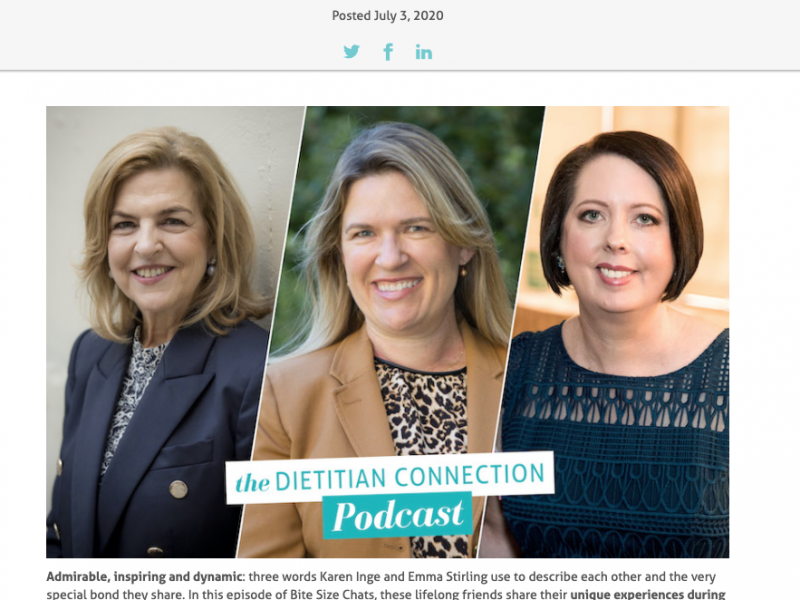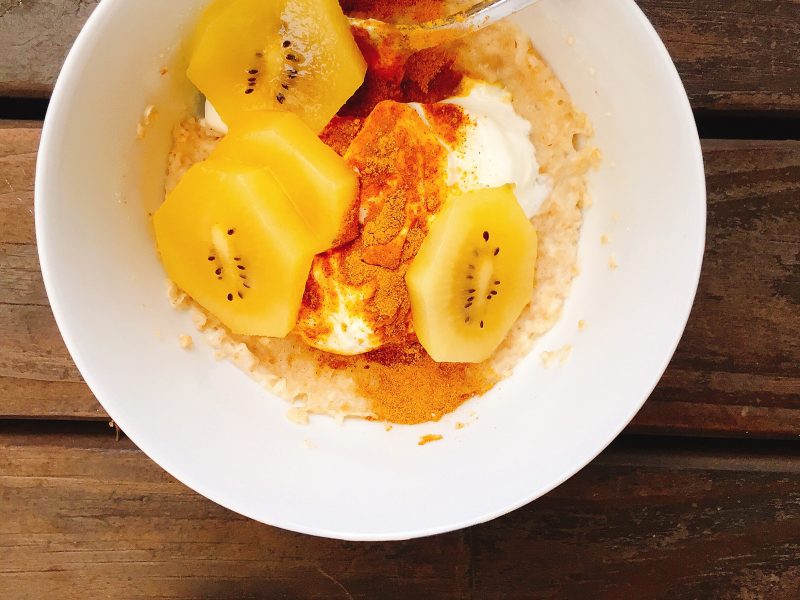Last night we had an exciting launch of #EatKit – a live, monthly Twitter chat moderated by Catherine Saxelby APD and myself. #EatKit stands for tips and tricks from dietitians toolkits. We hope #EatKit becomes a forum for all to share, learn and debate issues around the food we eat. If you’re a teacher, scientist, farmer, health nut, fitness fanatic, health professional, athlete, mum, dad, chef or journalist we’d love to connect with you and hope you’ll join us for the next session, Wednesday 21 September.
Our launch topic was: Is low fat dead and buried? And it was a timely and lively chat, as this week saw the somewhat controversial launch of the CHOICE report on muesli. Let’s take a look at the debate:
Breakfast club
With the promise of sustained energy, boosted nutrient levels, positive mood, enhanced mental and physical performance plus a healthy weight, do you really need any more excuses for not joining the breakfast club? While healthy eating may take a little effort in the early morning, ready to eat cereals are the quickest and one of the most nutritious ways to reap the benefits of breakfast. Ample research has dispelled the myth that skipping breakfast helps you stay in shape. Breakfast eaters are more likely to be of normal weight compared to non-breakfast eaters and make wise food choices throughout the day. So why did CHOICE put us off our breaky and compare the fat content of a muesli to a fast food burger? The media headlines went like this:
Before tucking into your morning muesli, be warned: you may be about to eat more fat than there is in a McDonald’s Double Quarter Pounder, Choice says.
The actual CHOICE report was slightly more careful with the wording:
Mueslis are intrinsically higher in fat than other cereals, but the fat is often from oats, seeds or nuts, so it’s the “good” unsaturated type (and you get the valuable nutrients that are found naturally in these ingredients). Boutique muesli brand The Muesli is an extreme example — both of its products are over 37% fat (a McDonald’s Double Quarter Pounder is 17.5% fat) and yet its only ingredients are oats, nuts, seeds and coconut.
There are a number of problems with the nutrient criteria used in the CHOICE report. But let’s stick to our topic of fat. Carman’s food company of course agrees that the criteria are flawed and my colleague Susie Burrell had some comments to make too. The report does look at saturated fat, but this was lost in the media headlines and unhelpful and unecessary focus on total fat. The need to distinguish between the quality or type of fat in a product or your diet, was a big part of our #EatKit chat last night. It’s also completely misleading to compare the %fat content of a burger that weighs 300g with a muesli serve that’s 50g. The first adds 53g of fat to your day, the second around 19g. More importantly the first adds 27.9g of saturated fat to your arteries, the second around 6g. See what I mean?
Portion caution
It’s important to be mindful that breakfast cereals differ in their recommended serve sizes in grams and the volume per serve. The difference in serve sizes is often due to the fact that the weight of breakfast cereals differs depending on the ingredients. For example a ¾ cup serve of Sultana Bran weighs 45g, whereas 1 whole cup of Cornflakes is lighter at only 30g. Serve sizes for mueslis are around 40-50g for only one third to ½ of a cup, as they are denser product. It’s a good idea, especially if you’re watching your waist, to keep a measuring cup in your cereal canister to make sure you stick to your desired serve size each morning. If not, what you actually pour into your bowl may be a much greater portion than what’s listed on pack. Reaching for a smaller bowl at breaky can help control portion distortion too. Remember, if you double the serve size, you need to double the kilojoule, sat fat, sugar and salt (sodium) counts per serve too.
The best approach is to stick to a small serve size of muesli with no or low dried fruit content, add fresh fruit instead and reduced fat milk or low fat yogurt to arrive at a hunger busting bowl full, without blowing out your daily kilojoule allowance. Or mix up a bircher muesli the night before, to help swell the oats and dried fruit to a satisfying volume. You’ll feel full all morning, skip that morning tea, and be ahead in the kilojoule stakes by lunchtime. With natural ingredients like wholegrain oats, raw nuts, seeds and dried fruit I love muesli. Do you? Love to hear your thoughts in the comments below.

 Pinterest
Pinterest

